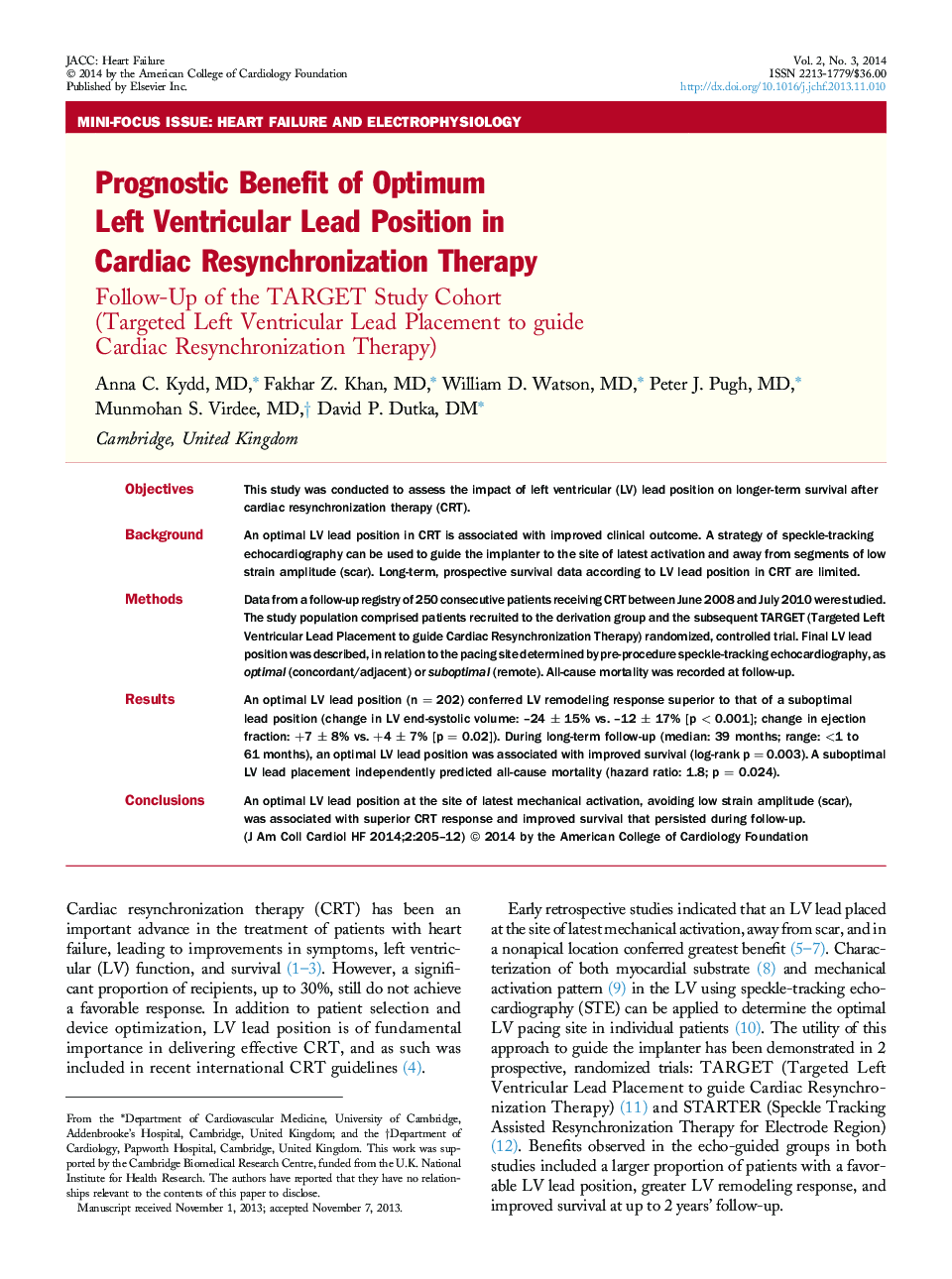| کد مقاله | کد نشریه | سال انتشار | مقاله انگلیسی | نسخه تمام متن |
|---|---|---|---|---|
| 2942498 | 1177129 | 2014 | 8 صفحه PDF | دانلود رایگان |

ObjectivesThis study was conducted to assess the impact of left ventricular (LV) lead position on longer-term survival after cardiac resynchronization therapy (CRT).BackgroundAn optimal LV lead position in CRT is associated with improved clinical outcome. A strategy of speckle-tracking echocardiography can be used to guide the implanter to the site of latest activation and away from segments of low strain amplitude (scar). Long-term, prospective survival data according to LV lead position in CRT are limited.MethodsData from a follow-up registry of 250 consecutive patients receiving CRT between June 2008 and July 2010 were studied. The study population comprised patients recruited to the derivation group and the subsequent TARGET (Targeted Left Ventricular Lead Placement to guide Cardiac Resynchronization Therapy) randomized, controlled trial. Final LV lead position was described, in relation to the pacing site determined by pre-procedure speckle-tracking echocardiography, as optimal (concordant/adjacent) or suboptimal (remote). All-cause mortality was recorded at follow-up.ResultsAn optimal LV lead position (n = 202) conferred LV remodeling response superior to that of a suboptimal lead position (change in LV end-systolic volume: –24 ± 15% vs. –12 ± 17% [p < 0.001]; change in ejection fraction: +7 ± 8% vs. +4 ± 7% [p = 0.02]). During long-term follow-up (median: 39 months; range: <1 to 61 months), an optimal LV lead position was associated with improved survival (log-rank p = 0.003). A suboptimal LV lead placement independently predicted all-cause mortality (hazard ratio: 1.8; p = 0.024).ConclusionsAn optimal LV lead position at the site of latest mechanical activation, avoiding low strain amplitude (scar), was associated with superior CRT response and improved survival that persisted during follow-up.
Journal: JACC: Heart Failure - Volume 2, Issue 3, June 2014, Pages 205–212